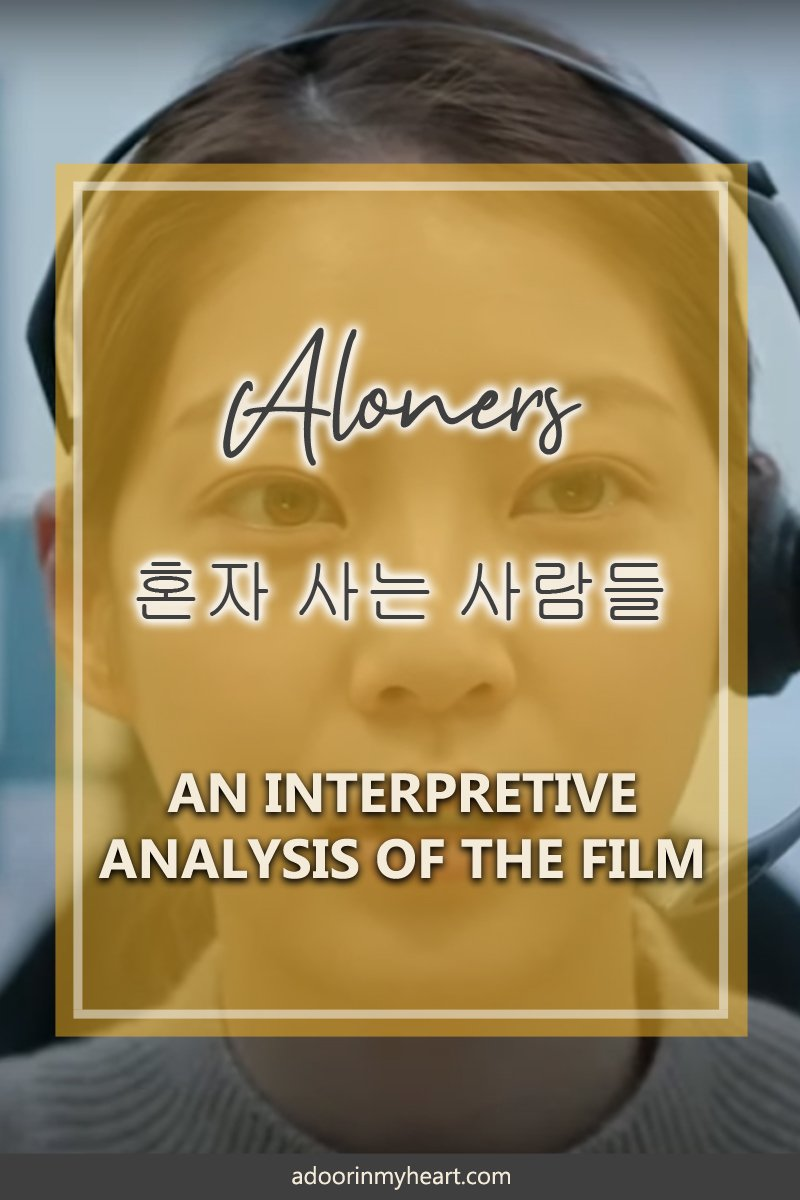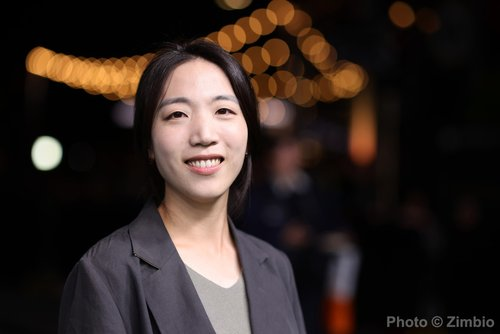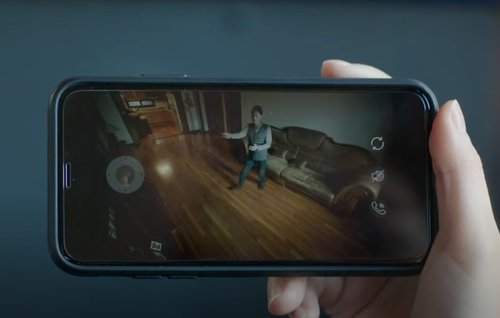
Aloners (혼자 사는 사람들): An Interpretive Analysis
Two nights ago, while soft, puffy flakes of snow fell from the dark grey sky outside, I had the great fortune of sitting inside the Bytowne Cinema to see the movie Aloners; or, in its original Korean, 혼자 사는 사람들. Made possible by both the International Film Festival of Ottawa (IFFO) and the Korean Cultural Centre Canada, I purchased a ticket at the first announcement, so eager to have somewhere to go other than my house. This was my first time attending a film festival in Ottawa, and actually my first time stepping foot in this particular local theatre, so needless to say I was delighted to attend.
A little context before we dive into my personal thoughts and feelings on the movie, because I don’t expect everyone to know all that much about Korean cinema! Aloners is the debut feature film of Hong
Sung-eun, a woman who wrote, directed, and edited this masterpiece of social commentary at just thirty-two years old. She addresses the phenomenon of 홀로족 (“holojok”: a portmanteau of the Korean
words for “alone” and “job”), denoting the increasing number of young adults who prefer to live on their own, by creating a character study that is both engaging and emotional. Also— although you won’t
believe me once you see the movie —it is the first feature-length role for Gong Seung-yeon, the incredible actress who portrays the film’s main character Jina.

Hong Sung-eun and I are the same age, which makes me wonder what I’ve done with my life.
So, onto the good stuff, yes? (Just a heads up, this is more of an interpretive analysis, rather than your standard “this-happens-and-then-that-happens-and-it-was-good” kind of review.)
From the very start of the opening scene you get a sense of solitude and loneliness, like a weight on your chest, like something seeping through your skin and right into your bones. The color theory is muted
and dull in everything from the characters’ clothes to the endless sea of high-rise buildings and the furniture therein. Only Jina’s television and phone, the two devices from which she can never seem to
separate herself, contain bright and lively colors. Now, anyone who has participated in a single elementary school art class can probably decipher that a subdued color scheme is typically meant to
symbolize sadness; however, in this particular context I interpreted it as representing the exact moment Jina’s life froze in time. What happens when you leave a picture in one place too long?
The color fades away, leaving behind a ghostly imprint of what was once vibrant. In my opinion, the repetitive and stagnant feeling dominating our protagonist’s every waking minute is due to
the fact that she has trapped herself in a snapshot, not moving forward or back, reliving the same dingy day over and over.

See how all the rich hues have been completely drained away, leaving the scene dusty and desaturated.
Jina is expertly written as the perfect embodiment of emotional detachment. Everything she does is meant to place as much distance between herself and the rest of the world as possible: headphones in her ears at all times, eyes fixated on her phone, and a strict refusal to allow anyone to penetrate the walls she’s put up. In fact, despite being a beautiful woman, Jina never wears makeup and always wears the same clothes, as if she’s trying to just fade away into the background. She ignores neighbors, coworkers, and family alike unless she feels forced to reply. This distance prevents any chance of connection or
attachment.
Perhaps the most telling, and most interesting, part of Jina’s character is that despite the great lengths she goes to in order to avoid actually feeling her feelings and her insistence to the contrary, it’s very
obvious that some part of her still craves the company of others… but you only see these moments when she’s completely alone. In her small apartment, she keeps the TV on at all times— even when
she’s asleep —just for the sound of someone talking; just so she won’t be crushed by the empty silence of her living space. I think this is an extremely relatable trait and accurately reflects one of the
drawbacks of living alone. Of course, the much more powerful example would be the camera Jina keeps in her parents’ living room, initially set up as a gesture of kindness to keep a watchful eye
over them as they aged but eventually becoming a window through which the young woman resentfully watches life go on without her.

It seems that Jina’s father, too, acts like
everything is fine but shows his vulnerabilities
when alone.
It’s established early in the movie that the primary cause of Jina’s stoic expression and guarded demeanor is her mother having recently passed away. Again, anyone who has even glanced at a psychology
textbook is familiar with the Stages of Grief, so I hardly need to explain that this character and her efforts to drift away from the real world while pretending everything is fine is going through classic
Stage 1, where everything is numb. While this is an acceptable surface analysis, I think it goes deeper than grief.
Remember, Aloners was created with the idea of taking a closer look at those types of young adults who are upending the traditional home lifestyle in favor of being alone. Something else to remember is
that while living on your own is terrifying in some respects, it’s equally liberating.
Jina lives inside a very specific routine, and routine is safe. As we grow up, most of us will still subconsciously think of our parents as a safety net, and as any unfortunate soul who lost a parent too soon
could tell you, once they’re gone, you’re in freefall. For Jina, the same bus with the same driver, the same food served by the same cooks, the same cigarettes smoked in the same spot, and the same
videos played on the same phone, is what became her safety net. As her life gets shaken up with the introduction of a new coworker, the frustration of an obnoxious father, the death of a neighbor and
subsequent arrival of a new one, it’s clear our protagonist feels like she’s losing her grip on the safety net and uses stone-faced reclusiveness to make herself inaccessible, masking her terror at the
prospect of being plunged into the unpredictable darkness of change once again. So yes, this theory is related to grief; however, it reflects how complex emotions, or lack thereof, can be.

As someone who is also change-averse, I can
say because change is unpredictable, it’s also
scary.
Going back to color theory for just a second, now that I’ve mentioned the introduction of a new coworker, I have to stop and compliment the filming surrounding the character of Sujin (and also I just have to
compliment the actress who plays her; Jung Da-eun is so gorgeously cute I fell in love with her right away). While Jina’s life is dull and colorless right down to a plaid complexion and drab clothes, Sujin is
saturated. She wears prim and pressed clothing, eye-catching pink lip tint… even her skin seems to have a healthy warm glow. This decision not only amplifies the contrast between Jina and Sujin’s
personalities, but it also effectively demonstrates the positive effect of allowing yourself to access emotions.
Now, in the interest of keeping this analysis spoiler-free out of courtesy for the director’s fantastic work, and to uphold the maximum emotional impact— I cried, okay? —of what I’ll call the story’s climax,
I won’t say too much more about the plot. There’s just one more thing I wanted to point out regarding the filmmaking.
It probably goes without saying, but the way a movie is shot can make or break the experience, because even a great plot can’t save scenes filmed at bad angles, or with poor framing, or just a style that’s at
odds with what’s happening at the time. Fortunately for all audiences of Aloners, Hong Sung-eun is a master of framework and lighting. I strongly suspect not a single scene in this movie was filmed without
intention; there were so many moments throughout my time in the theatre where I found myself admiring the deliberate use of doorways, walls, furniture, buildings, and streets to construct an exquisite
frame around the characters. Typically Jina is shown in or surrounded by things that make up square and rectangular framing for the shot. My personal takeaway from this decision is that these frames,
combined with the undecorated grey walls and concrete walkway of her apartment, are meant to evoke the sensation of being boxed in; of being imprisoned. Jina is a prisoner of her own mind, stuck
behind the bars of denial, grief, anger, loneliness, and confusion. Yes, she’s safe behind the guarded walls of her cell, but there’s more to life.

The doorway is used to create a frame around
Jina to symbolize being boxed in by this life.
Ultimately (and don’t worry, I’m still not giving away the ending), I think there are many important lessons that can be taken away from this film and from Hong Sung-eun’s perspective on life, but I don’t think I should be the one to tell you what to learn. This is one of those stories where everyone will relate to it just a little bit differently, and so I can only say that you should watch it for yourself because it is worth every second of the runtime.
Thank you again to the Korean Cultural Centre Canada and the Embassy of the Republic of Korea for facilitating the event that allowed me the opportunity to experience the debut piece from a writer/
director who’s sure to see a meteoric rise in the industry, not to mention the extraordinarily talented doe-eyed actress starring in it. An extra big thank you also goes out to IFFO for bringing both short and
feature-length films from all around the world to Ottawa and for choosing to have a theatre screening when we’re all so sick of endlessly staring into our computer screens. And I’d be remiss to not
mention the Bytowne Cinema, first of all for the beautiful historical building with an old-timey feel, and especially for staff who hosted a safe, vaccinated, socially-distanced event. I realize it’s a bit
sappy to write these long thank you notes, but it’s important to me that organizers understand their hard work does pay off and it ends up making nerds like me really happy.

Gong Seung-yeon’s acting range is outstanding,
and she perfectly portray’s Jina’s character arc.
Coming up: I’ll be attending a Zoom Q&A with Hong Sung-eun on Friday March 18th and will hopefully get to find out if any of the above theories and interpretations are correct!